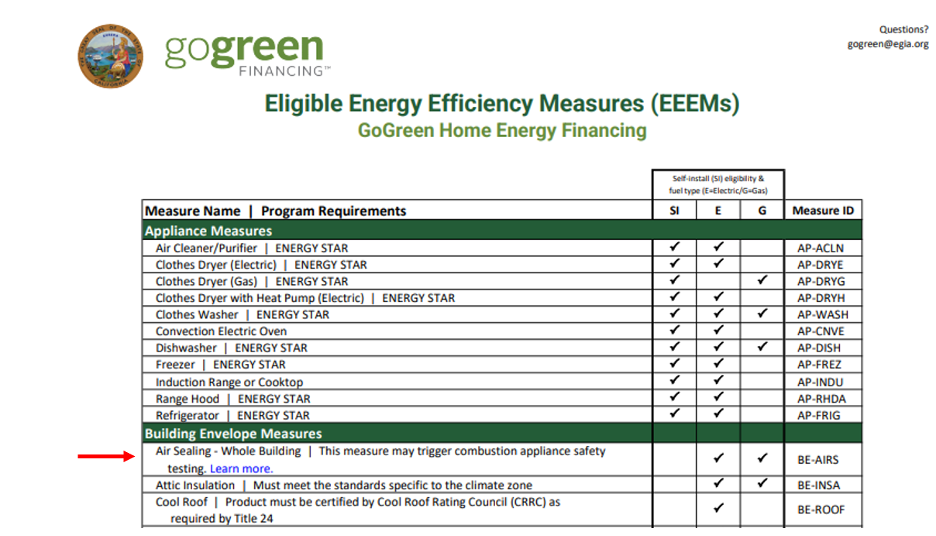GoGreen Home: For starters, combustion safety tests verify that atmospherically vented combustion appliances are working properly and not venting dangerous gases (such as carbon monoxide) into the living space.
There are two common combustion safety tests: Combustion Appliance Zone (CAZ)/Combustion Appliance Safety (CAS) Tests and Natural Gas Appliance Tests (NGAT). These tests consist of visual inspection, gas leak detection, ambient CO measurement, flue CO measurement and a spillage test.
How do I know if my project requires a Combustion Appliance Safety Test?
A combustion safety test is required for projects that include Air Sealing – Whole Building, Duct Sealing (Existing), and/or Duct Sealing (New) measures when an atmospherically-vented combustion appliance is present (or also being installed) within the sealed building envelope. For future reference, measures that may require a safety test are flagged on the Eligible Energy Efficiency Measures (EEEMs).

Who can perform the Combustion Appliance Safety Test?
A safety test must be performed by someone who meets one of the following qualifications:
- Find a BPI certified contractor in your area
- Become BPI certified yourself by filling out the BPI GoldStar Contractor Program Application
Test results are required as a part of project Quality Assurance reviews. You may submit results using your own form or GoGreen Home’s Combustion Appliance Safety Test Form.
Looking for a good way to avoid the extra work of a CAS/CAZ test? Help your homeowner remove atmospherically-venting gas appliances from the home and go electric!
